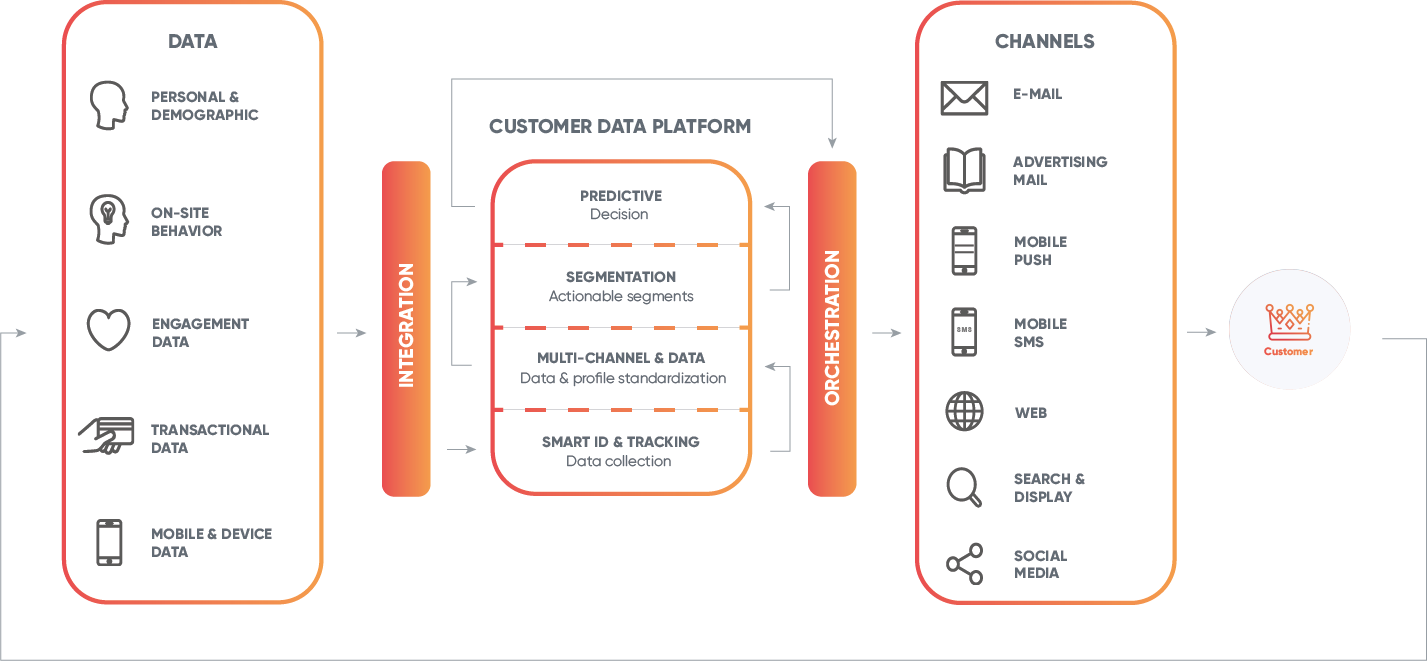Highlight

Successful together – our valantic Team.
Meet the people who bring passion and accountability to driving success at valantic.
Get to know usWhat marketers’ dreams are made of
Data is the essence. Embrace the complexity of the data landscape; with the right support, online and offline possibilities await. Passion and a Customer Data Platform (CDP) unlock the full potential of digitalization.

Customer Data Platform
Not just simple But simply awesomeAdmittedly, maybe it’s just us calling it “awesome” because it’s our passion. But as a young software category, the customer data platform shows not only how powerful data is but also how amazing it can be to work with it. Intuitive user interfaces keep even complex use cases simple.
The goal is for every marketer to be able to look at a 360° customer profile with full access to complete customer histories from all touchpoints – simple and straightforward.

Digital Transformation represents the end of data silos. To equip every marketer with full digital power, a CDP houses all centralized data and functions in a single location.
Demographic data
Basic data such as the customer’s name, age, and address.
Transactional data
Information on purchases, returns, subscriptions, average order values, and so on.
Customer-Customer
Response data from e-mails, text messages, push messages, and browser data.
Enriched data
Data from third-party systems such as customer service, call centers, loyalty programs, or offline data.
Diversity is fundamental for finding contemporary answers to new challenges. The same applies to CDPs. Vendor-specific functionalities in particular are the turbo boost for even the most diverse industries and business models when it comes to a customer data platform. Nevertheless, there are specific core functionalities that every CDP comes with.
Single customer view
The customer data platform plays an important role in digital transformation. It puts an end to data silos by merging data from different systems. Marketers can look at a single customer in isolation in their CDP and develop a personalized funnel to conversion with the help of a 360° customer profile.
But wait: Are you allowed to do that? YES! Because CDPs can also work with anonymous profiles.
Segmentations
The power of the single customer view is illustrated in a function called segmentation. One of the strongest examples is specific attributes. Once these are defined for a single customer, they can be used to create customer segments that go far beyond a demographic summary of the customer base. By combining behavioral, engagement, and purchase data, marketers now have access to sophisticated information that forms the basis for maximizing the benefits of campaigns.
That’s pure digital marketing. Marketing automation deluxe.
Provision of data for third-party systems
In times of digital marketing, a customer data platform working only with 1st party data is probably equally as rare as coming across rare earths in microchip production. The world of digital marketing is gigantic. Consequently, customers are not always just on your platforms. The provision of granular customer segments with high potential based on specific attributes for campaigns in third-party systems is thus the final step in which a CDP unfolds its full basic potential. At the same time, a return channel for relevant data, such as e-mail response data, is made available to further enrich the single customer view.
And that’s where unlocking the potential of a CDP starts all over again.
Diversity and development stages
Despite a uniform definition of what a customer data platform is and the core functionalities described, an independent landscape of CDPs with varying functionalities has emerged, not least due to a variety of providers and the rapid pace of development. In most cases, their additional functionalities allow for a kind of classification.
The core of all CDPs is the data CDP. Its focus is on consolidating data from various data sources and making it available in other systems. With customer data and often also the integration of customer journey approaches at its core, it sets itself apart from a mere data warehouse.
Due to the direct integration of reporting, analytics and, in some cases, predictive functionalities, the analytics CDP can be described as an extended data CDP.
According to the CDP Institute, a customer engagement platform (CEP) can be further differentiated into campaign and delivery CDP/CEP. However, the essential feature of both classifications is the activation and orchestration of marketing campaigns directly in the CDP.
We already mentioned it earlier: There are multiple providers of customer data platform solutions. Requirements for optimized digital interaction mechanics – for instance, in marketing – can vary widely. Just as you may be the best in your field, we know which providers are the best of the best in the field of customer data platforms. Or in our terminology: the best of their breed, the cream of the crop, the crème de la crème, the A-list, the … Just look for yourself!
Bloomreach
Emarsys
Just give us a call!

Hallo from Langenfeld
Nils Weber
Partner & Managing Director
valantic Division Customer Experience